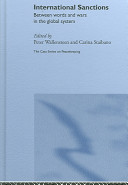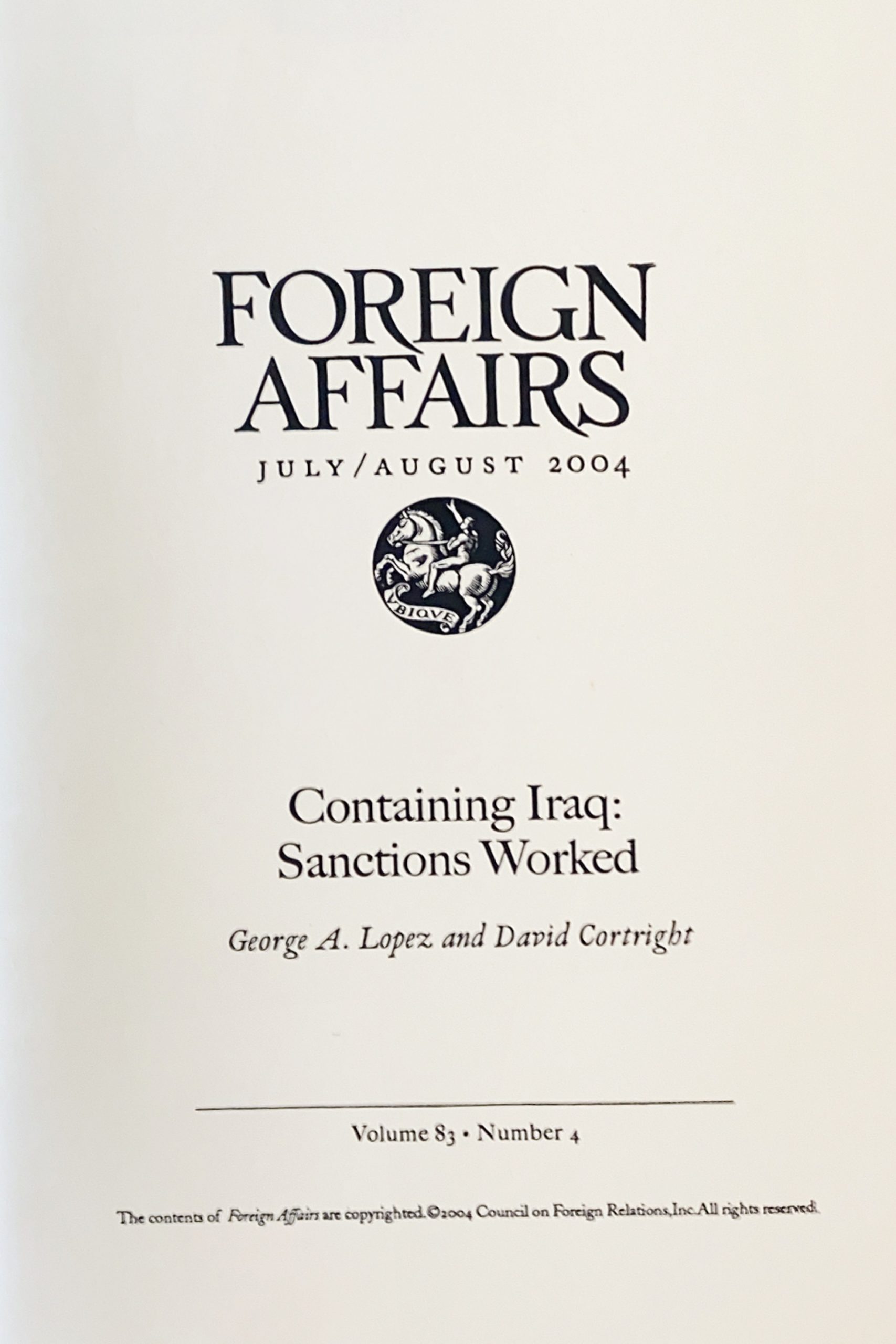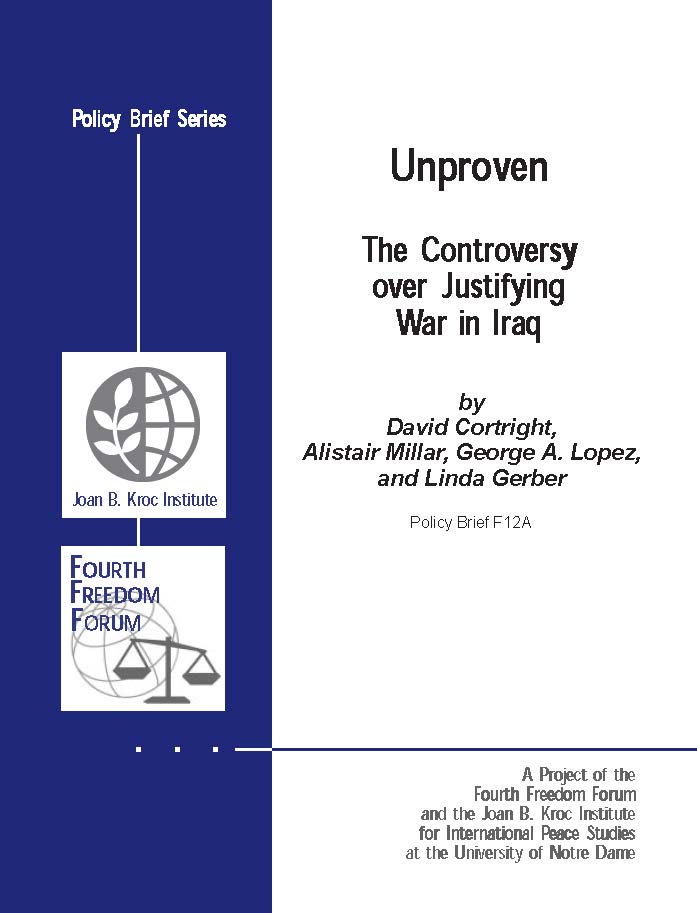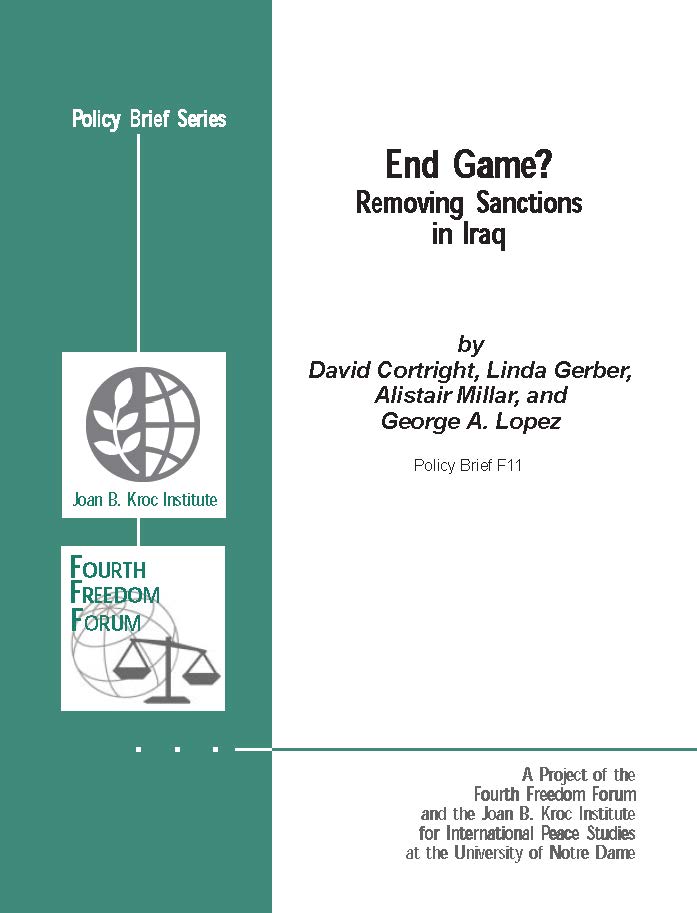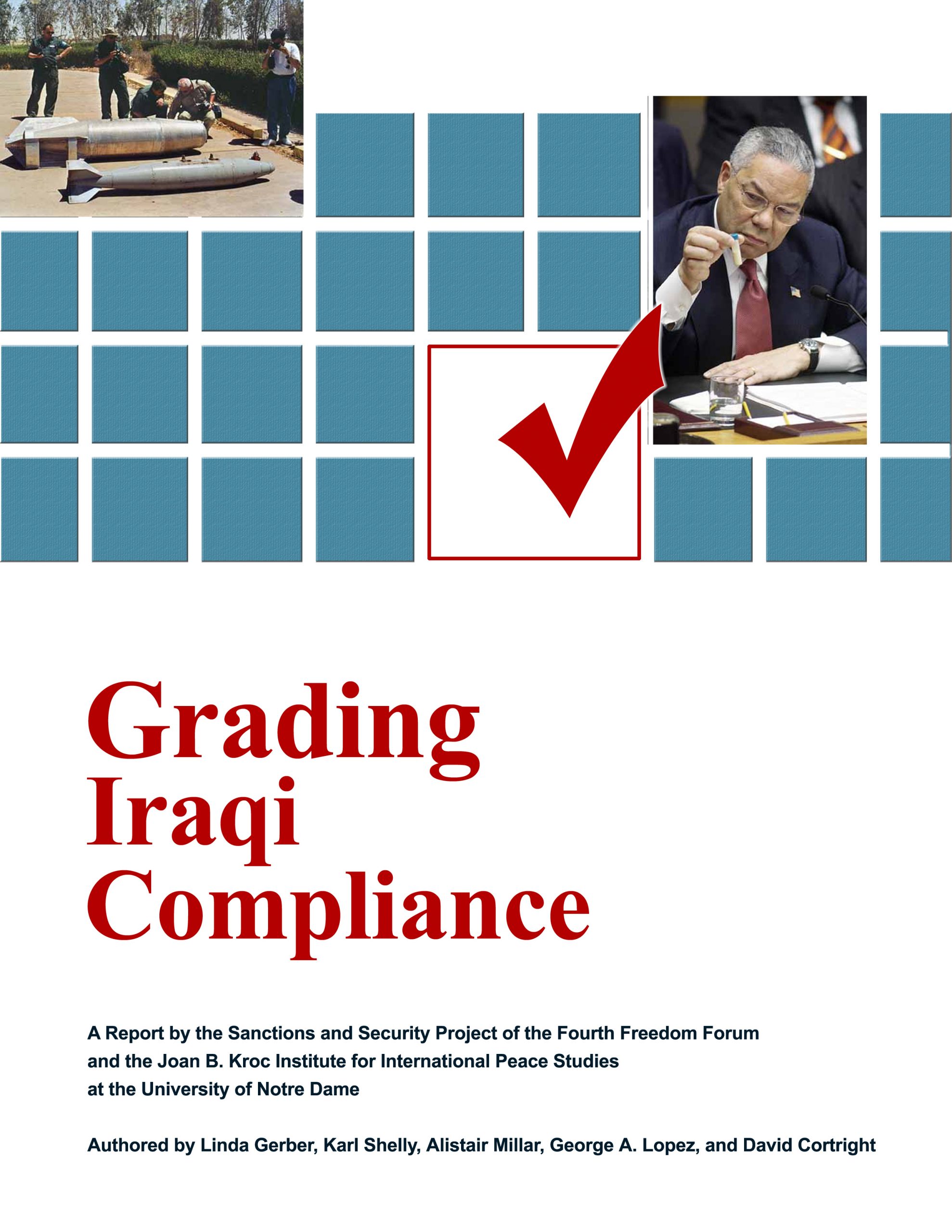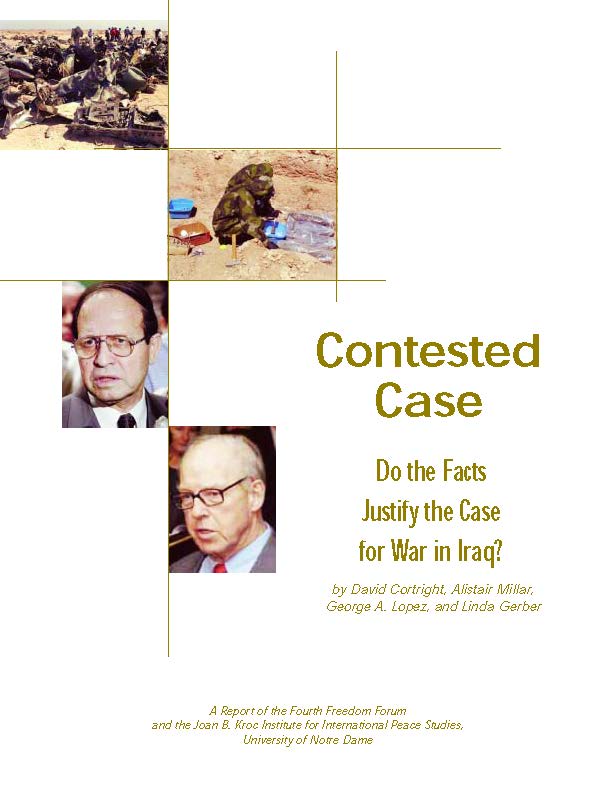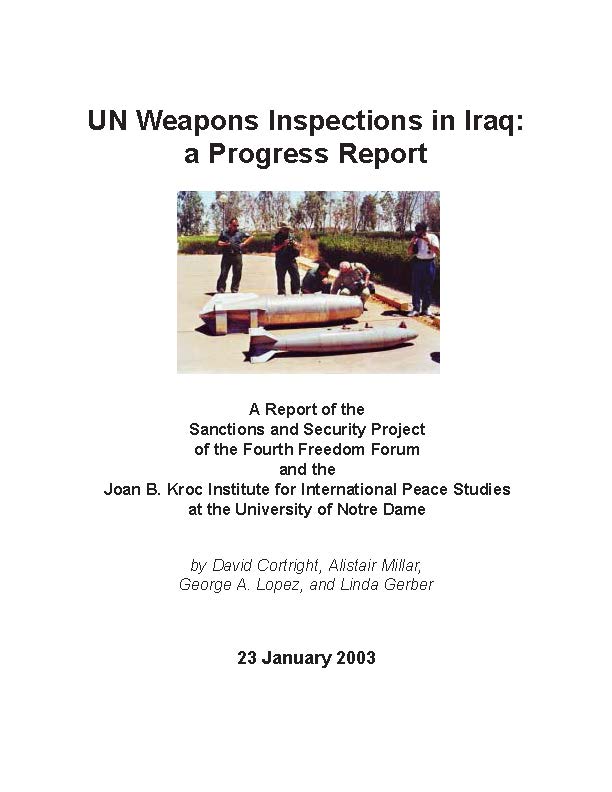A Sanctions Coordinator: Options for Enhancing Compliance
Book chapter — 2005
“A Sanctions Coordinator: Options for Enhancing Compliance” by David Cortright and George A. Lopez in International Sanctions: Between Words and Wars in the Global System, edited by Peter Wallensteen and Carina Staibano (Frank Cass, 2005) pp. 65-74.
